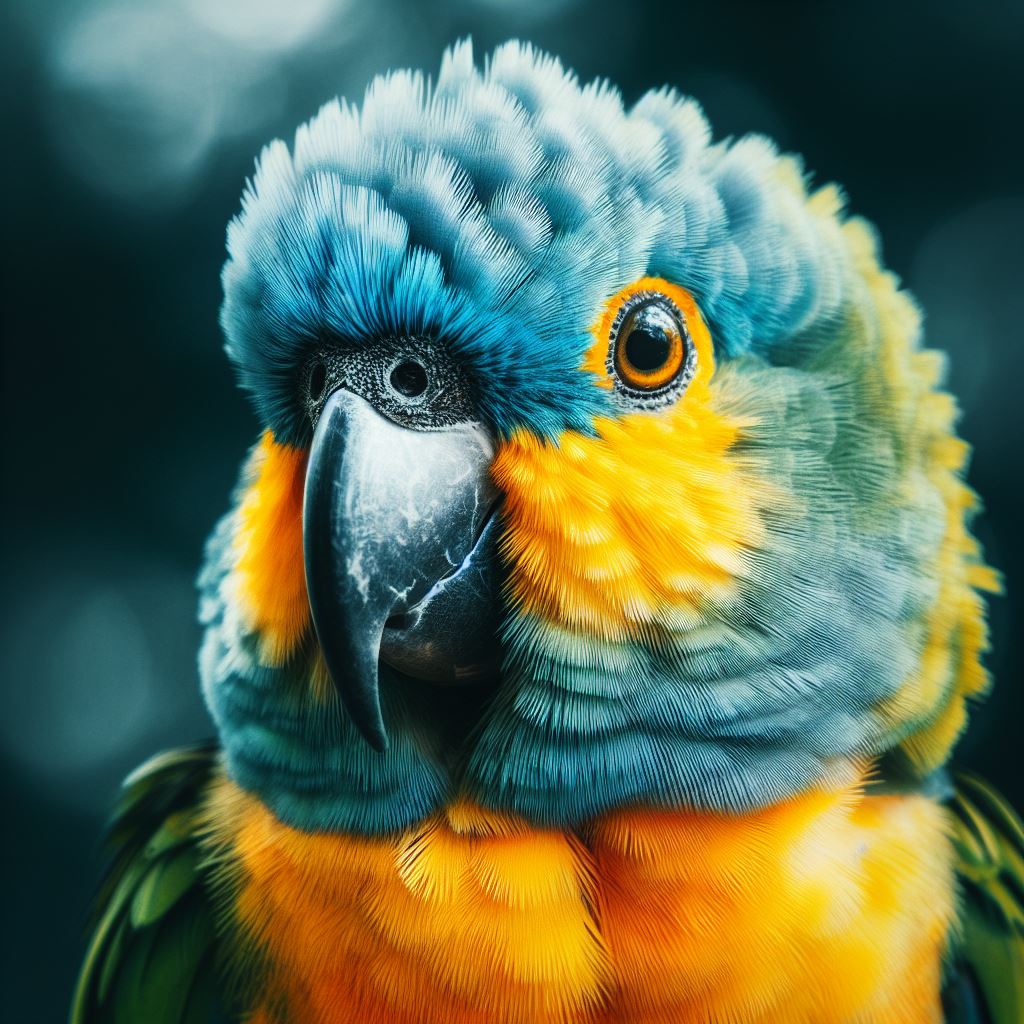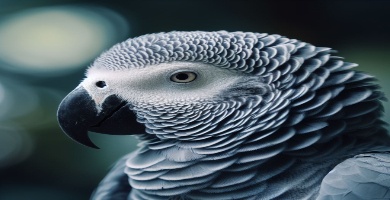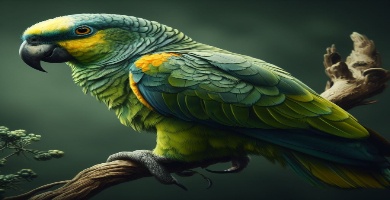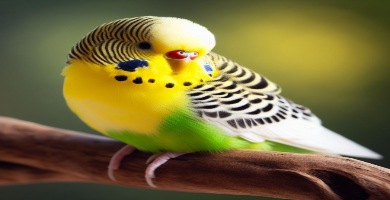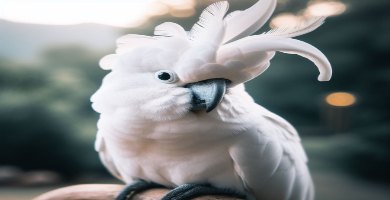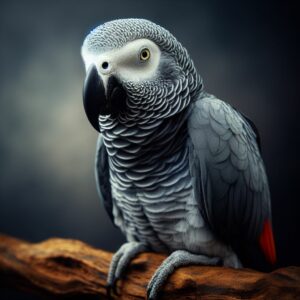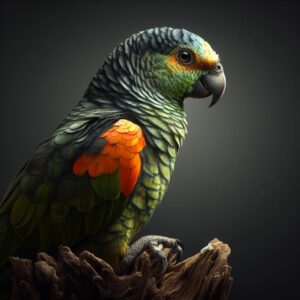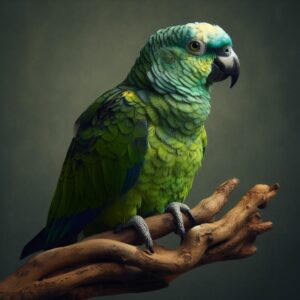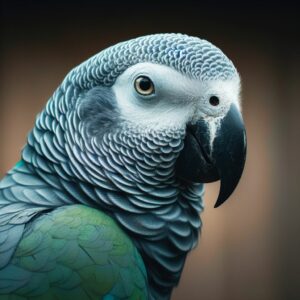Parrots, with their resplendent colors, sharp intellect, and captivating ability to mimic sounds, have long been cherished as delightful pets. In this ultimate guide, we will embark on a captivating journey into the realm of parrot pets, unraveling their benefits, the key factors in choosing the right one, exploring popular parrot species, understanding the ideal parrot traits, delving into care and training tips, mastering the art of bonding, deciphering the language of their colors and sounds, addressing common challenges, and ultimately, assisting you in finding the perfect parrot companion.
Benefits of Having a Parrot as a Pet
Owning a parrot is an enriching experience. Their vibrant hues, going from fiery reds to quiet blues, imbue life into any home. Beyond their visual appeal, these highly intelligent creatures possess problem-solving skills, the ability to learn tricks, and even speak. Their affectionate nature fosters deep bonds, making them ideal companions for those seeking emotional support and genuine companionship.
Factors to Consider When Choosing a Parrot Pet
Selecting the right parrot demands careful consideration. Their notable lifespan, which spans several decades, requires a long-term commitment. The size of the parrot matters, impacting space requirements and care needs. Additionally, understanding their vocal nature and socialization needs is crucial, ensuring a harmonious fit within your lifestyle.
Popular Types of Parrots for Pets
Parrots, with their diverse colors and fascinating personalities, come in various species, each unique in its way. As you embark on the journey of selecting a parrot friend, understanding the distinctive traits of popular types is essential. Here’s a glimpse into the enchanting world of parrots:
African Grey Parrot (Psittacus erithacus)
Highly intelligent and exceptional mimics, African Grey Parrots are known for their ability to grasp human speech and respond contextually.
Predominantly grey with touches of white and a vibrant red tail, their subtle hues belie their extraordinary intellect.
Their witty conversations and problem-solving abilities make them sought-after avian companions.
Amazon Parrot (Amazona spp.)
Lively and entertaining, Amazon Parrots are renowned for their vibrant personalities and amusing behaviors, making them delightful pets.
Their plumage displays an array of hues such as greens, blues, and yellows, creating a visually captivating presence.
Amazon Parrots’ playful antics and ability to mimic sounds add charm to their engaging personalities.
Budgerigar “Budgie” (Melopsittacus undulatus)
Small in size but big in personality, Budgerigars, or Budgies, are cheerful and social birds, forming strong bonds with their owners.
Budgies come in various colors including blue, green, yellow, and white, often with charming patterns, making them visually appealing.
Their friendly demeanor and ability to learn words and phrases make them popular choices for bird enthusiasts.
Cockatoo (Cacatuidae Family)
Affectionate and social, Cockatoos are known for their loving nature and distinctive crests that express their emotions.
Their feathers range from white and pink to black, often accented by striking hues on their crests, reflecting their emotional states.
Cockatoos’ cuddly nature and expressive crests make them endearing companions, deeply bonding with their human family.
Macaw (Ara spp.)
Playful and sociable, Macaws are characterized by their vibrant plumage and spirited nature, making them the life of any parrot party.
Macaws boast a stunning array of colors including brilliant blues, radiant reds, and vibrant yellows, creating a visual spectacle.
Their joyful antics and striking appearance make them popular among bird enthusiasts.
Each type of parrot brings its unique charm and companionship, so choose the one that aligns with your lifestyle and preferences, and embark on a delightful journey into the avian world.
Characteristics of the Best Parrots for Pets
An ideal parrot companion exudes friendliness forms strong bonds, and revels in human interaction. Trainability adds depth to the relationship, allowing for engaging activities and communication. A healthy, calm demeanor is essential, ensuring a contented life for both the parrot and its owner. Selecting a parrot as a pet is a significant decision, and understanding the key characteristics that make a parrot an ideal companion is crucial. When seeking the best parrot for your household, consider these essential traits:
- Friendly and Sociable Nature: Their social nature ensures they integrate well into family life, bringing joy and companionship to every household member.
- Trainable and Intelligent: Their trainability adds an interactive dimension to your companionship, making the bond fulfilling and engaging.
- Healthy and Calm Temperament: A healthy and calm parrot promotes a stress-free atmosphere, ensuring both the pet and its owner enjoy a peaceful and contented coexistence.
- Adaptability and Flexibility: Their adaptability ensures they comfortably adjust to changes, making them suitable companions for various living situations.
- Longevity and Lifelong Companionship: Longevity signifies a lifelong bond, providing consistent companionship and enriching the lives of their owners over the years.
- Affectionate and Gentle: Their affectionate nature fosters a deep emotional connection, making them cherished members of the family, offering love and comfort.
- Playful and Entertaining: Their playful antics serve as a source of entertainment, lifting spirits and infusing the environment with positivity and laughter.
- Good Health and Vitality: Parrots in prime health, showcasing vitality, and vigor, are indicative of their overall well-being. Impact:
Considering these characteristics will guide you in selecting the best parrot for your home. By understanding these traits and aligning them with your lifestyle and preferences, you can welcome a delightful feathered friend into your life, creating a meaningful and enduring companionship.
Parrot Care and Training Tips
Proper care and training are essential components of responsible parrot ownership. Ensuring your parrot’s physical and mental well-being, as well as fostering a strong bond through training, are key aspects of a fulfilling pet-owner relationship. Here are valuable tips for parrot care and training:
- Space Matters: Parrots need ample room to spread their wings, exercise, and explore. Choose a spacious cage that allows for natural movements.
- Varied Diet: Provide a well-balanced diet consisting of high-quality pellets, fresh fruits, vegetables, and occasional treats.
- Health Check-ups: Schedule regular visits to an avian veterinarian for health assessments, vaccinations, and parasite control.
- Positive Reinforcement: Use positive reinforcement techniques, such as treats and praise, to encourage desired behaviors like stepping up, staying on a perch, or learning tricks.
- Quality Time: Spend quality time daily talking, singing, playing, and engaging in interactive activities. Regular interactions strengthen the bond and provide mental stimulation.
- Enrichment Toys: Provide a variety of toys that encourage problem-solving and physical activity. Puzzle feeders and foraging toys engage their intellect.
Through patience, understanding, and consistent positive reinforcement, you’ll nurture a contented and well-adjusted avian companion.
Bonding with Your Parrot Pet
Establishing a strong bond with your parrot is a rewarding journey that requires patience, understanding, and consistent efforts. Cultivating trust and affectionate connections with your feathered companion enhances both their quality of life and your relationship. Here are effective techniques for bonding with your parrot pet:
- Respect Their Space and Comfort: Spend time observing your parrot from a distance to allow them to become familiar with your presence without feeling threatened.
- Communicate with Soft Speech and Gentle Movements: Speak to your parrot in a calm and gentle tone. Parrots respond well to soothing voices, which help them feel secure and relaxed.
- Offer Favorite Treats and Positive Reinforcement: Identify your parrot’s favorite treats and use them as rewards. Associating your presence with positive experiences encourages bonding.
- Engage in Interactive Activities: Engage in interactive games such as fetch, puzzle-solving activities, or offering toys. Playtime fosters a sense of companionship and mental stimulation.
- Spend Quality Time Together: Involve your parrot in your daily activities, such as reading, watching television, or cooking. Being part of your routine helps them feel integrated into your life.
- Gentle Physical Contact and Grooming: Allow your parrot to get used to your touch gradually. Start with gentle strokes on their beak, head, or back.
- Create a Safe and Comfortable Environment: Ensure their cage is in a safe, quiet, and draft-free area. A secure environment promotes feelings of safety and security, aiding the bonding process.
By incorporating these techniques into your daily interactions, you’ll nurture a deep and meaningful bond with your parrot. Remember, every parrot is unique, so adapt your approach based on their personality and preferences. With time, patience, and genuine affection, your parrot will become a cherished member of your family, bringing endless joy and companionship into your life.
Understanding the Language of Colors and Sounds
Parrots, with their vibrant plumage and remarkable ability to mimic sounds, communicate in a language that is as colorful and diverse as their appearances. Understanding the nuances of their language enriches the bond between parrots and their human companions. Here, we explore the intricate language of colors and sounds in parrots, offering a fascinating insight into their world.
The Significance of Parrot Colors:
Parrots boast an array of colors, each carrying its symbolism and significance.
- Red and Orange: Symbolize energy, passion, and love. Parrots with red or orange hues often exhibit strong personalities.
- Yellow: Represents joy, happiness, and intellect. Yellow parrots are often cheerful and quick learners.
- Blue: This signifies calmness, tranquility, and depth. Blue parrots tend to be gentle and affectionate companions.
- Green: Symbolizes growth, harmony, and balance. Green parrots are known for their adaptability and social nature.
Understanding a parrot’s color palette provides valuable insights into their emotional states and personalities.
The Melodic World of Parrot Sounds:
Parrots possess exceptional mimicry abilities. They can replicate human speech, other animals, and even household noises.
- Squawks and Calls: Parrots use various squawks and calls to communicate danger, excitement, or their presence to other parrots.
- Melodic Tunes: Some parrots create melodic tunes, showcasing their musical abilities and expressing contentment.
Interpreting parrot sounds involves paying attention to tone, pitch, and context. A high-pitched squawk may indicate excitement, while melodic tunes often signify happiness and relaxation.
The Role of Color and Sound in Social Interaction:
In the wild, vibrant plumage plays a role in mate attraction. Similarly, parrots use their colorful feathers to engage and captivate their human companions.
- Social Bonds: Parrots use sounds to strengthen social bonds. Vocalizations, especially mimicked human speech, signify trust and affection.
- Warning Signs: Changes in color intensity or specific sounds can indicate discomfort or stress. Understanding these signals helps in addressing their needs promptly. In the intricate world of parrots, colors and sounds serve as their unique language, enabling them to express emotions, establish connections, and navigate their environment.
By observing and comprehending the language of colors and sounds, you can deepen your understanding of your parrot’s feelings and enhance your communication with these magnificent avian companions. Embracing their vibrant language strengthens the bond, fostering a relationship built on trust, respect, and mutual understanding.
Addressing Common Challenges
Owning a parrot is a rewarding experience, but it comes with its own set of challenges. Understanding and addressing these challenges is crucial for ensuring a harmonious relationship between you and your feathered friend. Here, we explore common challenges faced by parrot owners and offer effective solutions to create a nurturing environment for your pet.
- Managing Vocalizations: Parrots are naturally vocal creatures, which can be disruptive in certain environments. Solution: Engage your parrot in stimulating activities to keep them mentally occupied. Provide interactive toys and puzzles to divert their attention. Positive reinforcement can be used to encourage quiet behavior. Additionally, training sessions can teach your parrot specific cues for vocalization control.
- Longevity and Commitment: Parrots have long lifespans, requiring a significant, often lifelong, commitment from owners. Solution: Before getting a parrot, thoroughly research their lifespan and ensure you are prepared for the long-term commitment. Establish a routine and provide consistent care to ensure your parrot’s well-being throughout their life. Regular veterinary check-ups are essential for monitoring their health.
- Dietary and Care Needs: Parrots have specific dietary requirements and need a well-rounded care routine. Solution: Offer a balanced diet that includes high-quality pellets, fresh fruits, and vegetables. Avoid harmful foods such as chocolate and caffeine. Regular grooming and hygiene practices, like nail trimming and beak maintenance, are vital. Additionally, provides ample opportunities for physical exercise and mental stimulation.
4. Behavioral Issues:
Challenge: Parrots may exhibit behavioral problems, including aggression and destructive tendencies. Solution: Identify the root cause of the behavior and address it accordingly. Positive reinforcement techniques can be used to encourage desirable behavior. Enrich their environment with toys and activities that stimulate their minds and bodies, reducing boredom-related issues.
5. Social Interaction:
Challenge: Parrots are social creatures and need interaction and companionship.
Solution: Spend quality time with your parrot daily. Engage in interactive activities, talk to them, and offer physical contact. If possible, consider getting another parrot to provide companionship, ensuring they are introduced and supervised properly.
6. Mental Stimulation:
Challenge: Parrots require mental stimulation to prevent boredom and related behavioral problems.
Solution: Rotate toys regularly to maintain their interest. Introduce puzzle feeders and foraging toys to encourage problem-solving skills. Create an enriching environment with perches, swings, and climbing structures.
7. Veterinary Care:
Challenge: Finding a specialized avian veterinarian can be challenging. Solution: Research and locate a qualified avian vet before bringing a parrot home. Regular check-ups and prompt medical attention when needed are essential for their well-being. By proactively addressing these challenges, you can create a fulfilling and enriching environment for your parrot. Understanding their needs, providing mental and physical stimulation, and offering unconditional love and care are the keys to a happy and well-adjusted parrot companion.
Conclusion: Finding Your Perfect Parrot Companion
In the vibrant world of parrot ownership, finding your ideal feathered friend is a journey that requires careful consideration and unwavering commitment. As we conclude this exploration into the realm of parrot companionship, let’s recap the essential elements that will guide you in finding your perfect parrot companion.
- Researching Parrot Species: Each parrot species has its unique traits, temperaments, and care requirements. Extensive research about various species will help you make an informed decision. Learn about their vocalizations, social behavior, and potential challenges specific to the species.
- Seeking Professional Guidance: Consult avian experts, veterinarians, or experienced parrot owners for guidance. Their insights and advice can be invaluable in understanding the complexities of parrot ownership. Ask questions, express your concerns, and gather as much knowledge as possible.
- Building a Supportive Environment: Create a parrot-friendly space within your home. Provide a spacious cage, engaging toys, and a stimulating environment. Designate an area where your parrot can interact with you and the family. Enrich their surroundings with natural perches, climbing structures, and mentally stimulating activities.
- Developing a Bond: Building a strong bond with your parrot requires patience, love, and consistent interaction. Spend quality time talking, playing, and engaging in activities with your parrot. Respect their boundaries, understand their body language, and respond to their cues.
In the enchanting world of parrot companionship, the bond you forge with your feathered companion is deeply rewarding. With dedication, understanding, and genuine affection, your parrot can become a cherished member of your family, bringing vibrant colors, delightful sounds, and boundless joy into your life. As you embark on this journey, remember that your parrot’s well-being and happiness are a reflection of the care and devotion you provide. May your partnership with your parrot be filled with endless moments of love, laughter, and shared adventures.

